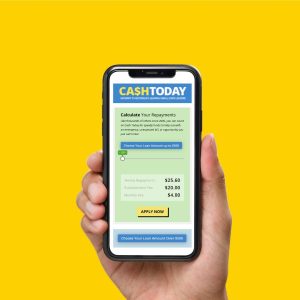
Table of Contents
- Introduction
- Understanding Fast Cash Loans
- Common Uses of Fast Cash Loans
- Costs and Risks Involved
- Alternatives to Fast Cash Loans
- Conclusion
Introduction
In Australia, the demand for small amount credit contracts (often known as payday loans) remains strong, with over 4.7 million payday loans issued between 2016 and 2019, totaling approximately $3.09 billion, according to the Australian Securities and Investments Commission.
This trend underscores the growing reliance on fast cash loans to cover urgent financial needs—particularly among low-income and vulnerable consumers—driven by unexpected bills, emergencies, and gaps in income.
Understanding Fast Cash Loans
Fast cash loans, also known as payday loans or small amount credit contracts, are short-term loans typically ranging from $200 to $2,000.
They are designed to be repaid within a short period, often by the borrower’s next payday or within a few weeks to a year .
These loans are unsecured, meaning they do not require collateral. The application process is usually quick and straightforward, with many lenders offering online applications and rapid approval times.
Common Uses of Fast Cash Loans
Australians commonly use fast cash loans to cover unexpected expenses or urgent financial needs. Some typical scenarios include:
- Emergency medical expenses: Covering costs not paid by Medicare or health insurance.
- Car repairs or breakdowns: Ensuring transportation for work or family obligations.
- Utility bills: Preventing disconnection of essential services.
- Gaps between paychecks: Managing cash flow issues until the next income is received.
These loans provide immediate access to funds, which can be crucial in times of financial distress.
Costs and Risks Involved
While fast cash loans offer quick access to funds, they can be expensive. For loans up to $2,000, lenders can charge:
- An establishment fee of 20% of the loan amount.
- A monthly fee of 4% of the loan amount.
For example, borrowing $2,000 over one year could result in total repayments of approximately $3,360, which is $1,360 more than the amount borrowed.
These high costs can lead to financial strain, especially if the borrower is unable to repay the loan on time. Defaulting on a payday loan can result in additional fees and potential damage to the borrower’s credit rating.
Alternatives to Fast Cash Loans
Before opting for a fast cash loan, consider these alternatives that may offer more favorable terms:
- No Interest Loan Scheme (NILS): Provides loans up to $2,000 for essential items, with no interest or fees. Eligibility criteria include earning less than $70,000 annually or holding a Health Care or Pension Card .
- Centrelink Advance Payment: Allows eligible Centrelink recipients to receive an advance on their benefits, which is interest-free and fee-free .
- Financial Counselling Services: Offer free and confidential advice to help manage debts and explore other financial assistance options.
Conclusion
Fast cash loans can provide immediate financial relief in times of need. However, it’s essential to understand the associated costs and risks before proceeding.
Exploring alternatives such as NILS or Centrelink advance payments may offer more sustainable solutions without the high fees and potential for debt cycles.
If you find yourself frequently relying on fast cash loans, consider seeking advice from a financial counsellor to develop a plan for long-term financial stability.
 :
https://au.pinterest.com/cash_today/
:
https://au.pinterest.com/cash_today/

